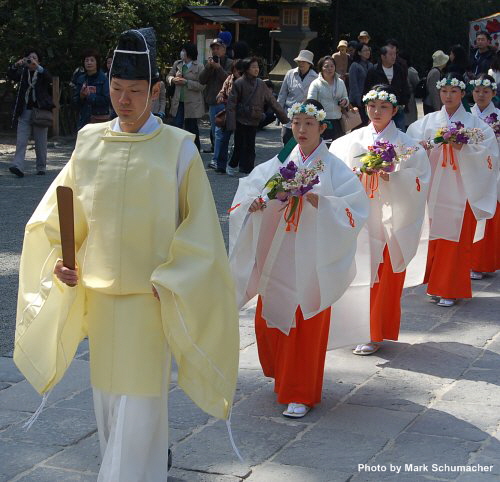Japanese Bridal Beauty
By Margaret Shrum
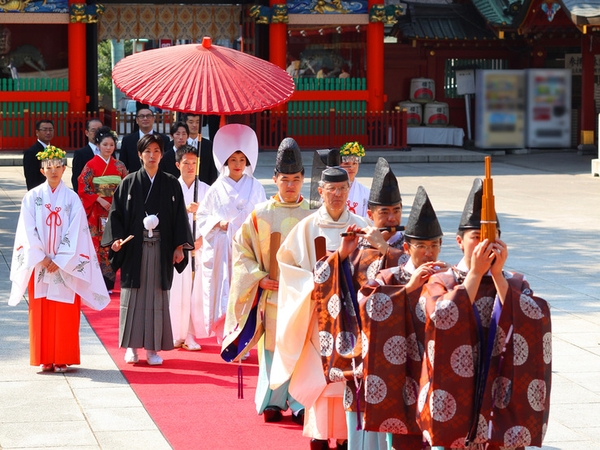
This summer, I was fortunate to spend two weeks traveling throughout Japan. It was a feast for the senses; temporal beauty was reflected in the architecture, art, cuisine and of course the fashion. This was evident while visiting Kyoto, where I stumbled upon two completely different, yet traditional Japanese wedding ceremonies; each one clearly defined by very different kimono designs.
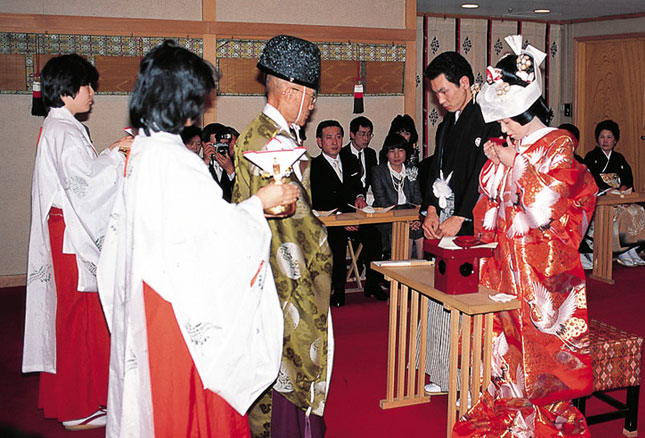
Both ceremonies, held outside in a Shinto temple, were attended by the female miko, or shrine maidens, whose formal costumes were also elaborate and spectacular. The miko’s traditional clothing is either a pair of long, red, divided trousers or a long, red, slightly pleated skirt tied with a bow. She wears a white kimono jacket and some white or red hair ribbons.
In the first wedding party, the bride was dressed in an all-white kimono, called a shiro-maku; translation-white and pure. I was told that the color white was meant to symbolize death, referring to the end of the bride’s life as a single woman and the beginning of her new life as a wife. The white kimono often has glittery threads woven into the fabric and sometimes there is a hood that covers the head called a tsunokakushi which means horn covering. This is to conceal any jealous feelings that the bride may have toward her new family.
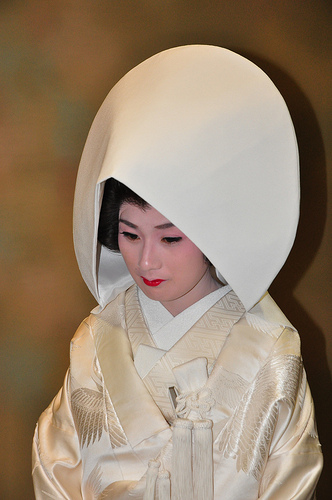
Tsunokakaushi Wedding Kimono
The rest of the wedding party wore black kimonos called tomesode. Close relatives of the bride and groom wear irotomosode, which is a single color kimono patterned only below the waistline. The mothers of the bride and groom wear kurotomesode, which are typically black kimono patterned only below the waistline and are more formal.
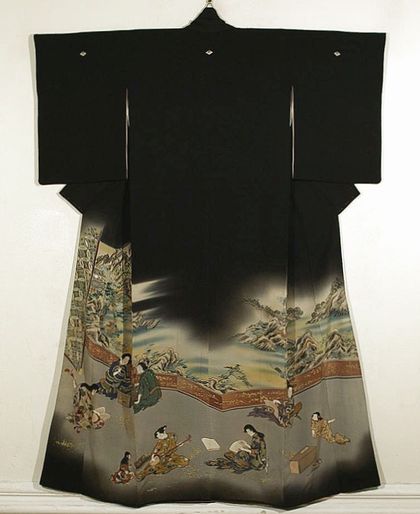
Tomesode Kimono
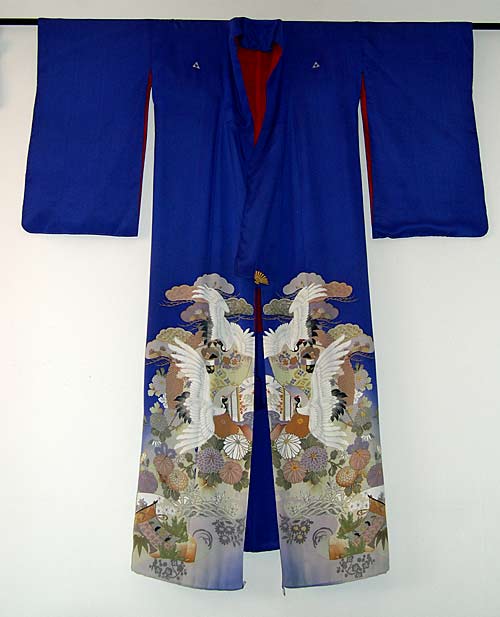
Irotomosode Kimono
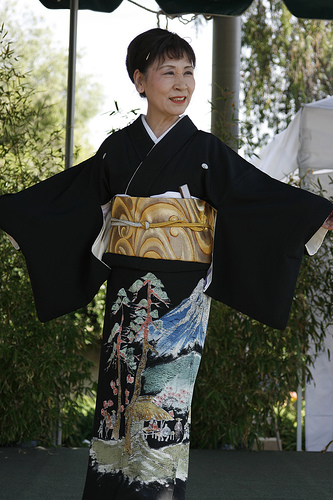
Kurotomesode Kimono
The second wedding party was very different; the bride wore a very colorful, heavily embroidered kimono called uchikake. It had a very thick padded hem and I was told that it is worn like a coat over another wedding kimono called a kakeshita. The kakeshita often has beautiful and auspicious marriage symbols embroidered in the fabric, such as cranes which represent mating for life or pine which symbolizes longevity. The kakeshita is worn with a formal obi belt. Several of the women in the wedding party were also dressed in lavishly embroidered kimonos.
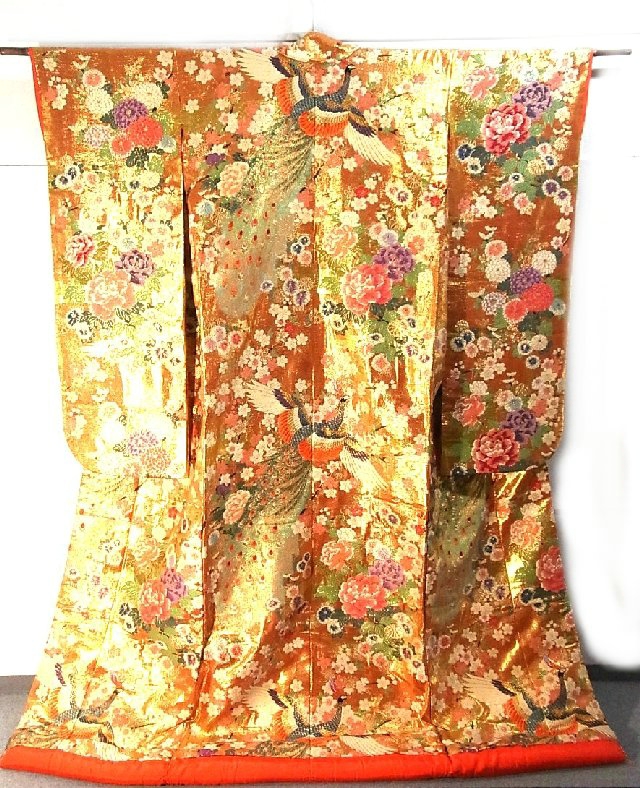
Uchikake Kimono
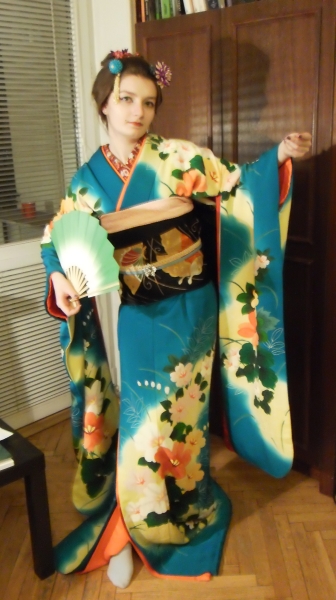
Kakeshita Kimono
It was just gorgeous to witness all this cultural beauty and to reflect on how the wedding tradition, no matter how different the tradition, seems to always center on the rich visual appeal of the bride’s dress.

